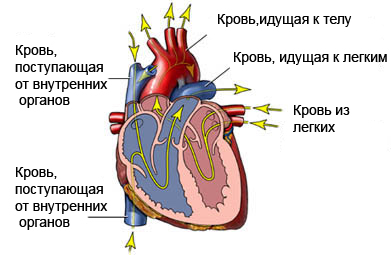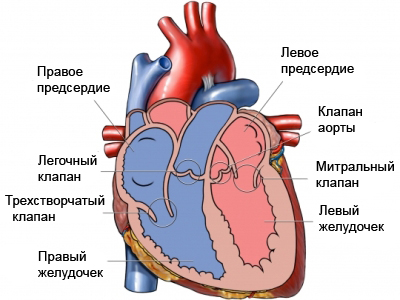Ebstein's anomaly in a child
Description anomalies Эbshteyna
Ebstein's anomaly is a rare heart defect. In a healthy heart blood from the body enters the right atrium. Then, it goes to the right ventricle. Then the blood is sent into the lungs through the pulmonary valve. Here it is oxygenated and returned to the left atrium and left ventricle proceeds in. Then the blood goes to the rest of the body.

Ebstein's anomaly occurs, when the tricuspid valve into the right ventricle is below, than usual. Besides, valve normally does not open and does not close . This causes “seepage” blood in the reverse direction. Ebstein's anomaly can vary from mild to severe.

Reasons for Ebstein's anomaly
It is a birth defect, and means, heart shaped properly, when a child develops in the womb. A child is born with the disease. Why is the heart develops this way in some babies, unknown.
Risk factors for Ebstein's anomaly
Specific risk factors for Ebstein's anomaly are not clear. Two possible risk factors include:
- Genetic abnormalities;
- The negative impact of the environment.
Symptoms of Ebstein's anomaly
Symptoms of different, depending on the severity of the defect. In some cases there are no symptoms. In other cases, symptoms may include:
- Swelling in the abdomen and legs;
- Blue or pale skin color;
- Palpitations or feeling of skipped beats;
- Reduced energy.
During the examination, the doctor may detect a heart murmur.
These symptoms can also be caused by other diseases.
Diagnosis anomalies Эbshteyna
The doctor asks about the symptoms and medical history, and performs a physical exam. Tests may include:
- Echocardiogram – to look at the size of the, shape and motion of the heart;
- Heart catheterization – test, which uses a catheter (tube) and x-ray machine to assess the heart and its blood supply;
- Chest X-ray;
- MRT – to make pictures of structures inside the chest;
- CT scan – type of X-ray, which uses computer, to make pictures of structures inside the chest;
- Electrocardiogram – test, which measures the electrical activity of the heart;
- Other monitoring (Holter or event monitor ) and tests (eg, stress test) for measuring the heart rhythm and its functions.
Treatment anomalies Эbshteyna
In the presence of the disease is often required emergency surgery. Treatment also includes:
Medication
Your doctor may prescribe medication:
- To restore normal heart rhythm;
- To reduce the amount of body fluids.
Procedures
Depending on the condition of the child, your doctor may recommend:
- Operation. Surgery may be needed to correct or replace the tricuspid valve. This will reduce the leakage of blood back;
- Ablation. This procedure can be done, if a child has abnormal heart rhythms. To the heart of the catheter is fed. Abnormal tissue is destroyed, to restore a normal heart rhythm.
Monitoring
The child should have regular examinations by a cardiologist. In some cases, the child may need to take antibiotics before certain dental or medical procedures, to prevent infections.
Prevention anomalies Эbshteyna
There is no way to prevent this disease. In pregnancy it is necessary to adhere to the recommendations of the doctor and undergo regular examinations.
